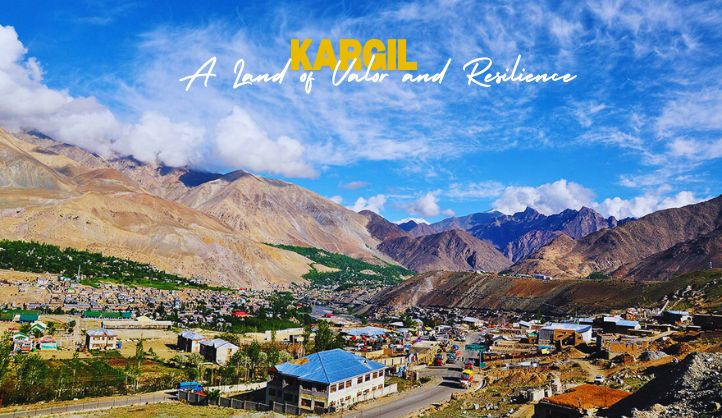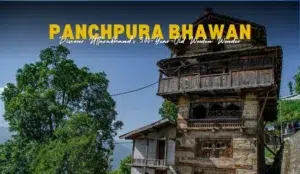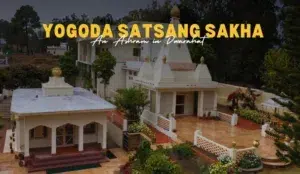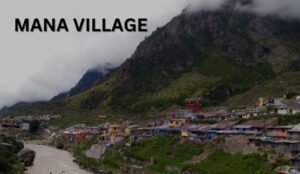In the rugged terrains of the Ladakh region, Kargil stands as a symbol of bravery, natural beauty, and cultural richness. Known for its strategic significance and heartwarming landscapes, Kargil holds a special place in the hearts of Indians and travelers worldwide. It is not just a geographical location; it is a testimony to courage, heritage, and the breathtaking charm of the Himalayas.
Geography and Location
Kargil is located in the Union Territory of Ladakh, bordering Pakistan-administered Gilgit-Baltistan to the west. Perched at an altitude of approximately 8,780 feet (2,676 meters) above sea level, the town lies on the banks of the Suru River. It serves as a gateway to the Zanskar Valley and is an essential stop for adventurers and pilgrims traveling through Ladakh.
Historical Significance
Kargil’s historical relevance dates back to ancient times, as it was a part of the Silk Route, connecting traders from Central Asia, Tibet, and India. However, it gained prominence during the Kargil War of 1999, a critical conflict between India and Pakistan. The war was a fierce battle fought to reclaim the peaks infiltrated by enemy forces. Today, Kargil symbolizes the resilience and bravery of the Indian Armed Forces and the sacrifices made by its soldiers.
Dras: The Gateway to Kargil
Located 56 kilometers from Kargil, Dras is known as the “Second Coldest Inhabited Place on Earth,” with temperatures dipping as low as -60°C during winters. This picturesque town played a pivotal role during the Kargil War and is home to the Kargil War Memorial, a must-visit for those who want to pay tribute to the fallen heroes.
Kargil’s Climate: A Challenge and a Beauty
Kargil’s climate is one of its defining characteristics. The town experiences extreme variations between summer and winter.
Summer
Summers are relatively short but pleasant, from May to September. During this period, the temperatures range from 15°C to 30°C in the daytime, with chilly evenings. This is the perfect time to explore the town’s historical sites, and monasteries, and take part in outdoor activities such as trekking and camping.
Winter
Winters are extremely cold, with temperatures dropping as low as -30°C. Snowfall is common, and the town turns into a winter wonderland. The chill in the air makes it one of the most pristine destinations to visit during the colder months, provided travelers are well-prepared for the harsh conditions.
Culture and Traditions
It is home to a rich cultural tapestry, predominantly influenced by Tibetan Buddhism and Islam. The town hosts several festivals like Losar, marking the Tibetan New Year, and Eid celebrated with great enthusiasm by the local Muslim population. The harmonious coexistence of diverse communities reflects the region’s inclusiveness.
The local cuisine, featuring dishes like thukpa, momos, and skyu, showcases a mix of Tibetan and Ladakhi flavors, providing a delightful experience for food lovers.
Local Culture
The people of a harmonious blend of various cultures, primarily Tibetan Buddhism and Islam, which creates a unique atmosphere in the region. While the majority of the population in Kargil follows Islam, the town and surrounding areas are also home to numerous Buddhist monasteries and temples. The residents of Kargil, known for their hospitality and warmth, live amidst a beautiful mixture of traditions, customs, and languages.
The local languages include Balti, Ladakhi, and Urdu, with many residents speaking Hindi and English, especially in the tourism sector. The cultural exchanges are evident in the festivals and everyday life, where both Muslim and Buddhist celebrations are observed with equal fervor.
Traditional Kargili clothing plays an essential role in the local lifestyle. In winter, the locals wear heavy woolen robes, which help them endure the extreme cold. The summer months witness lighter, yet equally colorful clothing suited to the milder temperatures.
Adventure and Trekking
It is a paradise for adventure lovers. Surrounded by the vast Himalayan range, it offers countless trekking and mountaineering opportunities. Some of the popular trekking routes around Kargil include:
- The Suru Valley Trek: Known for its lush green fields and the majestic Nun Kun peaks, this trek is perfect for those who seek a combination of natural beauty and adventure.
- Zanskar Trek: For experienced trekkers, the Zanskar trek is a rugged and thrilling experience that takes you through the pristine landscapes of Zanskar, leading into the valley of the same name.
- The Great Himalayan Trek: This is a more challenging trek, extending across various ridges and passes, offering views of glacial lakes, alpine meadows, and remote villages.
For those who love river rafting, the Suru River provides exciting rapids, and the experience of rafting through the narrow valleys with the towering mountains in the backdrop is truly unforgettable.
Camping in Kargil
The serene surroundings of Kargil are perfect for camping, especially during the summer months when the weather is conducive for outdoor activities. Zanskar Valley and Suru Valley are popular camping destinations where adventure seekers can enjoy bonfires, starry nights, and the tranquility of the natural world. Many agencies offer camping packages for those who wish to escape the hustle and bustle of city life and experience nature at its best.
How to Reach Kargil
- By Air: The nearest airport is in Leh, approximately 220 km from Kargil. From Leh, one can hire taxis or board buses to reach Kargil.
- By Road: The Srinagar-Leh Highway (NH-1) connects Kargil with major cities. The journey is scenic and passes through the famous Zoji La Pass.
- By Train: The nearest railway station is Jammu Tawi, from where one can travel by road to Kargil.
Nearby Places to Explore
It is not just a destination but a gateway to several other fascinating locations. Here are some of the must-visit places to visit :
1. Dras
Known as the “Gateway to Ladakh“ and the “Second Coldest Inhabited Place on Earth,” Dras is famous for its chilly climate and the Kargil War Memorial. The memorial, with Tiger Hill in the background, honors the brave soldiers of the 1999 Kargil War. The pristine surroundings and historical significance make Dras a must-visit.
2. Zanskar Valley
A remote and breathtaking valley, Zanskar is an adventurer’s paradise. It offers activities like trekking, river rafting, and camping. The stunning Phugtal Monastery, Zongkhul Monastery, and the famous Chadar Trek on the frozen Zanskar River are key attractions.
3. Suru Valley
Known for its lush green meadows, charming villages, and majestic Nun-Kun peaks, Suru Valley is a haven for nature lovers and trekkers. The serene Suru River adds to its picturesque appeal, making it an ideal spot for photography and picnics.
4. Mulbekh Monastery
Famous for its giant Maitreya Buddha statue carved into a rock, this monastery is a spiritual and cultural gem. The surrounding landscapes add to its mystique, making it a favorite among history buffs and peace seekers.
5. Lamayuru Monastery
Known as the “Moonland of Ladakh,” Lamayuru is famous for its unique lunar-like landscapes and one of the oldest monasteries in Ladakh. The monastery hosts vibrant festivals, offering visitors a glimpse into Ladakhi culture.
6. Rangdum
A high-altitude plateau, Rangdum is the gateway to the Zanskar Valley. The Rangdum Monastery, perched atop a hill, offers stunning views of the valley and is a spiritual retreat for travelers.
7. Leh
The capital of Ladakh, Leh is a bustling hub for culture, history, and adventure. Attractions include the Leh Palace, Shanti Stupa, Magnetic Hill, and monasteries like Thiksey and Hemis.
8. Padum
The main town of Zanskar Valley, Padum offers a mix of natural beauty and cultural experiences. It is surrounded by ancient monasteries such as Karsha Gompa and Stongdey Monastery.
Conclusion
Kargil is more than just a destination; it is a melange of valor, serenity, and culture. Whether you’re a history enthusiast, nature lover, or adventure seeker, Kargil has something for everyone. Its awe-inspiring landscapes, poignant war stories, and warm hospitality make it a place worth visiting.
FAQs About Kargil
Why is Kargil famous?
Kargil is famous for its role in the 1999 Kargil War and its breathtaking landscapes, including valleys, monasteries, and adventure activities.
What is the altitude of Kargil?
Kargil is located at an altitude of approximately 8,780 feet (2,676 meters).
What are the major attractions in Kargil?
Major attractions include the Kargil War Memorial, Suru Valley, Zanskar Valley, Mulbekh Monastery, and Rangdum Monastery.
Is Kargil safe to visit?
Yes, Kargil is safe for tourists, with adequate infrastructure and security.
What is the best time to visit Kargil?
The best time is from May to September when the weather is pleasant.
What is the best time for trekking?
The best time for trekking in Kargil is from May to October, when the weather is suitable for outdoor activities.
Can I visit Kargil year-round?
Yes,It can be visited year-round, but extreme winters from November to February may limit access to some areas due to heavy snow.
Are there any special permits required to visit Kargil?
While Kargil itself does not require a permit, travelers wishing to visit border areas close to Pakistan might need to obtain Inner Line Permits (ILP).
What are the accommodation options in Kargil?
Kargil offers a range of accommodation options, from budget guesthouses and hotels to more luxurious stays. Zanskar and Suru Valley offer camping and homestay options as well.





